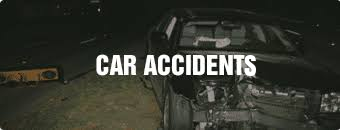- Our Firm
- Personal Injury
-
-
-
Personal Injury Lawyers
-
-
-
-
-
-
Injured in an accident? At Diamond & Diamond, our team of lawyers rely on their reputation in the field and extensive experience in personal injury to provide clients with a dedicated support system over the duration of their case.
-
-
-
-
-
HAVE YOU RECENTLY BEEN INJURED IN AN ACCIDENT?
-
-
-
- Corporate
- Class Action

Municipal Liability
Living in the city has its perks, but it also comes with certain risks. If you suffer personal injury because of a poorly maintained road or while riding a public bus, you could sue the city for compensation. The municipal government is just as liable for personal injuries, due to negligence, like any other entity when it fails to provide the duty of care it owes to those living within its limits.
However, suing a city or town in civil court for compensation is not easy. It requires a skilled and knowledgeable personal injury lawyer steeped in municipal liability law to pull it off.
The Law of Municipal Liability
Municipal liability in Ontario is a complex issue. Under Ontario’s Municipal Act, the government is responsible for public spaces, such as roads, highways, bridges, parks, and public services, such as public transport, police force, and firefighters. As such, local authorities owe civilians a duty of care and should ensure that these public accommodations and services will not cause undue property damage or personal injuries.
Municipal liability risk management
Municipalities have so many dealings with civilians, however, that the risk of something terrible happening on government property or within their jurisdiction for lack of inspection or maintenance is high. This is the reason personal injury lawsuits often cite municipalities as defendants.
To manage this risk, section 44 of the Municipal Act placed limits on the liability of local authorities for the maintenance of public roads and highways and buildings and structures, which is governed by the Occupiers’ Liability Act. Section 450 further limits liability by stipulating that a municipal or local government may not be held liable if “the action or inaction results from a policy decision.”
In essence, public liability stops when the local government can prove that the failure to maintain a road is because of a policy, i.e., delayed maintenance due to lack of funding. The same applies to anything that happens under the government’s jurisdiction if the situation results from a policy decision.
Negligence Act
Suppose local authorities fail to act in good faith to keep civilians reasonably safe, such as defaulting on their duty to keep a highway in a reasonable condition. In that case, municipal liability kicks in under the Negligence Act. If the city or local authorities are partially responsible for the injuries, they may be held jointly and severally liable to the victim of personal injury.
Accidents Caused By Municipal Negligence
Accidents happen for many reasons, and no one is to blame. However, the whole idea behind negligence is the event or accident would not have occurred but for the action or inaction of a third party. That is the basis of municipal liability in the following examples:
Failure to Maintain a Highway
In the case of Just v. British Columbia, the plaintiff, John Just, and his daughter were travelling along a highway in British Columbia when a rock fell from the slope and hit their car. The accident killed the daughter and seriously injured Just. The lower court dismissed the negligence claim because highway maintenance was policy and protected from liability. Still, the Supreme Court sent it back for retrial and Just succeeded in his lawsuit.
Slip and Fall
In the case of Nelson (City) v. Marchi, the respondent, Taryn Joy Marchi, maintained that she suffered injuries due to the negligence of city personnel performing snow clearing activities. The slip and fall accident occurred because the snow plowing crew neglected to provide safe access to the sidewalk. The Supreme Court of Canada found that the city owed the respondent a duty of care and was not immune from liability.
Failure to Carry Out Inspection
In the case of Ingles v. Tutkaluk Construction Ltd., the plaintiff sued the contractor and the City of Toronto for failing to ensure the renovation work was up to the building code. The renovation resulted in flooding to the basement and significant property damage, and a subsequent inspection showed the initial work was defective.
While the plaintiff was partially responsible for not insisting on getting a building permit before the work began, the court eventually found that the building inspectors failed to carry out their duty to inspect the contractor’s work thoroughly. The Supreme Court of Canada found that the City was jointly and severally liable for 14% of the damages, and the contractor was liable for 80%,
None of the cases above resulted in a positive outcome for the aggrieved party in the first trial. They all went through the appeals process before a final resolution. The extensive arguments in the case laws are testament to the complexity of personal injury claims for public liability.
Factors that Contribute to a Municipality’s Liability for Car Accidents
While municipal liability is often open to interpretation, it would be good to know the factors contributing to it. Suppose you sustain serious injuries in an accident. In that case, you may be able to file a claim for compensation against local authorities if it was due to the following:
- Broken Traffic Lights
- Debris on Roads/Highways
- Ice or Snow
- Missing Guardrails
- Missing or Inappropriate Road Signs
- Uneven Roads/Pavements
- Unrepaired Potholes
Negligence in Municipal Liability |
|
|
What to Prove |
In any public liability case, the plaintiff must prove that gross negligence on the part of the city or municipality is the direct cause of the injuries sustained. Gross negligence means there was an apparent failure on the part of the government body in their duty of care. |
|
Arguments for Negligence |
|
|
The Obligations of the Municipality |
Under Ontario’s Municipal Act, municipalities should keep public structures and areas in a “reasonable state of repair,” particularly highways, bridges, and sidewalks. |
Be ready to fight for your rights in a municipal liability case with the help of Diamond and Diamond. Contact us today to learn more about how we can assist you.
Pro Tip
“Get municipal liability insurance that can protect you from possible damages and accidents.”
– Diamond and Diamond
Municipal and Public Liability and Diamond & Diamond
People expect local and municipal authorities to act according to their duty of care to their citizens. When they, or the people that represent them, fail to exercise reasonable care in the day-to-day performance of their duties, people can suffer extensive injuries through no fault of their own.
However, proving public liability is tricky and requires extensive knowledge of municipal law and municipal liability risk management. What’s more, you need to file a claim within ten days of the incident, or you lose any chance of compensation. Therefore, you should not waste any time.
The personal injury lawyers at Diamond and Diamond understand the urgency and can help you file a claim within the prescribed period. Our lawyers are familiar with the requirements to push forward claims against cities and municipalities when seeking compensation for personal injuries and property damage.
Don’t hesitate to call our 24/7 injury hotline at 1-800-567-HURT right now if you or a loved one sustained an injury due to municipal negligence. You can also request an initial free consultation online so we can evaluate your case immediately.
Need a Lawyer?
We are here 24/7 to address your case. You can speak with a lawyer to request a consultation.
1-800-567-HURTGet started with a free consultation
OUR TEAM
- Ishmeet Sandhu
- Nolan Bachmann
- Annamarie Demaj
- Jeffrey Hum
- Tofunmi Adeyeye
- Alessia De Gasperis
- Amandeep Chawla
- Jeremy Tsoi
- Kimiya Razin
- Shir Zisckind
- Gray Sinden
- Shelly Bard
- Christian Brown
- Daly Canie
- Tanveer Sohal
- Prianka Virdi
- Noah Brownstone
- Justin Kaminker
- Harinder S. Bhatti
- Craig Yargeau
- Kiran Birk
- Amit Singh
- Andrei Teju
- Maria Zahid
- Matthew Douglas
- Jacob Elyk
- Harry Gill
- Kristina Olivo
- Egi Bano
- Cam Woolley
- Charles Thompson
- Alexandra McCallum
- John Sime
- Allan Cocunato
- Patrick Poupore
- Erika Henderson
- Marina Korshunova
- Brandon Handelman
- Regeena Alapat
- Ryna Kim
- Natalia Poliakova
- Isaac Zisckind
- Manpreet Bhogal
- Mathura Santhirasegaram
- Nikolai Singh
- Sandra Zisckind
- Jeremy Diamond
- Michael Blois
- Darryl Singer
- Nadia Condotta
- Tinashe Madzingo
- Megan Armstrong
- Veronica D’Angelo
- Corey J. Sax
- Scott Tottle
- Steven Wilder
- TJ Gogna
- Jillian Carrington
- Joshua Himel
- Simon Diamond
- Cory Rubin
- Simon Mariani
- Brandon Greenwood
- Basil Bansal
- Nastassia Ivanova
- Tania Fleming
- George Laloshi
- Patrycja Majchrowicz
- Diana Iakossavas
- Dior Africa
- Alex Ragozzino
- Liana Saccucci
- Richard J. Chang
FAQs on Municipal Liability
What is the municipal government responsible for?
Municipal governments have jurisdiction over public areas and services such as community water systems, parks, roads, parking lots, libraries, and local police. The authority of the municipality has originated from the provincial government.
What is an example of a municipal law?
Many provincial statutes govern municipalities. One example is Ontario’s Municipal Act, which defines municipal bodies’ authority, responsibility, and liability.
Is municipal law part of public law?
Municipal law may be said to be part of public law because it pertains to the legal relationship of the state to its citizens. On the other hand, private law pertains to the legal relationship between individuals. The interesting thing about municipal liability is that it involves tort law, typically part of private law.
What could possibly cause to the rise of the significant legal liability of municipalities?
The rise in legal liability of municipalities can be attributed to more lawsuits being filed, a tight insurance market, unrepaired potholes, missing guardrails, uneven roads, and even climate change.
When can accident victims submit a notice of their personal injury claim to the municipality?
In claims against municipalities in Ontario, accident victims must submit a notice of their claim to the municipality within 10 days of the accident. However, the timeframe is flexible, if, for example, the injury resulted in death or an extended stay at the hospital.
What are the exemptions as to what municipalities can be sued for?
Municipalities are exempt from liability if a statute so permits or if the municipality’s decision arose out of a policy decision as opposed to an operational decision. As in, the former is exempt from liability while the latter is not. However, whether something is a policy or operational decision will depend on the facts of each case and, therefore, there is no straight forward answer.
NEED A LAWYER? CONTACT OUR TEAM TODAY
Chat Now
OR CALL NOW FOR A FREE CONSULTATION
 1-888-INFO-LAW
1-888-INFO-LAW
Head Offices
Main Offices
Barrie
Main Office
168 Bayfield Street
Calgary
Main Office
1331 Macleod Trail SE, Suite 645
Edmonton
Head Office
4246 97 Street NW, Unit 103
Halifax
Consultation Office
1701 Hollis St
London
Main Office
256 Pall Mall St, Suite 102
Oshawa
Consultation Office
50 Richmond Street E, Unit # 108 B
Ottawa
Main Office
955 Green Valley Crescent, Unit 315
Sudbury
Main Office
31 Larch Street, Unit 300
Timmins
Main Office
120 Cedar Street South, Unit 002A
Toronto
Head Office
255 Consumers Road, 5th Floor
Vancouver
Head Office
1727 West Broadway, Suite 400
Windsor
Main Office
13158 Tecumseh Rd. E. Unit 3B
Additional Areas Served
Ontario
- Ajax
- Alberta
- Aurora
- Barrie
- Belleville
- Bowmanville
- Brampton
- Brantford
- Brockville
- Bracebridge
- Bradford
- Burlington
- Burnaby
- Calgary
- Chatham
- Cobourg
- Collingwood
- Cornwall
- Durham
- Edmonton
- Elliot Lake
- Etobicoke
- Georgetown
- Guelph
- Hamilton
- Huntsville
- Kanata
- Kelowna
- Kingston
- Kitchener
- Leamington
- London
- Markham
- Milton
- Mississauga
- Muskoka
- Niagara Falls
- Newcastle
- Newmarket
- North Bay
- North York
- Oakville
- Orangeville
- Orillia
- Oshawa
- Ottawa
- Owen Sound
- Parry Sound
- Perth
- Peterborough
- Pickering
- Prince Edward County
- Richmond
- Richmond Hill
- Sault Ste Marie
- Sarnia
- Scarborough
- St. Catharines
- St. Thomas
- Stouffville
- Sudbury
- Surrey
- Thunder Bay
- Timmins
- Toronto
- Uxbridge
- Vancouver
- Wallaceburg
- Waterloo
- Welland
- Whitby
- Windsor
- Woodstock













